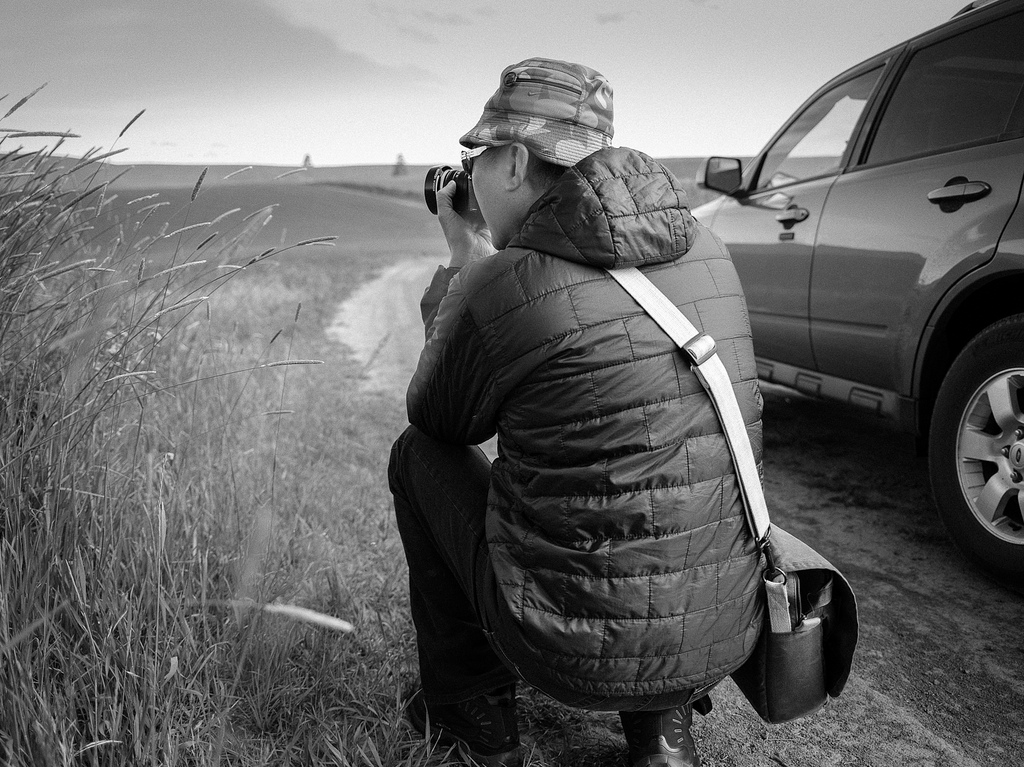 Originally posted by dcshooter
Originally posted by dcshooter 
Uluru, I'm usually on the same page as you on most issues, but frankly your argument here comes off as incredibly snobbish and a bit misguided. By way of example, the Rao photos in the link you posted are for the most part thoroughly mediocre images despite their detail, with only 2 or 3 decent ones in the entire spread. All the megapixels and dynamic range in the world will not change that fact. Conversely, there are artists out there churning out fantastic work with Holgas and pinhole cams. Think of it as the blotchiness of a Monet vs. the grotesque hyperrealism of any number of art school failures.
The fact is, it's not the tool, but the artist in whose hand the tool is held.
There is a misunderstanding. Intent is important. Talent is important. Tools are important. All is important.
It is true that emotional appeal of the image taken with Pentax Q can be magnificent, but there is also a dimension that tools, up to certain sensor and lens combination, will not be able to capture or mimic.
So I'm not denigrating the value of a certain camera and lens combinations, but stressing why we need new ones, when previous reach their limits.
I'm comparing this picture with traditional arts just to see there is a good analogy, and also, a similar struggle that happened in the past in traditional art techniques as well.
Good example were pastel and watercolour mediums on one side, and oils and sculpture on the other side. Former are cheaper, generally much quicker to do and are truly portable. Latter are not; they are more difficult to do, every error shows up more prominently.
Expressive art can be done in all of them, same as boring pieces, but one cannot deny that inherent predispositions of some mediums can accommodate a wider spectrum of possibilities — no matter to which aesthetic end — and some mediums have more opulent vocabulary. One example: really good abstract expressionism as done by so called New York school is impossible to do in watercolours and in pastel. They didn't even bother with those mediums. It is very similar to as when a photographer chooses rather medium format camera to do portraits and dismisses using Pentax Q because it is inadequate for all the stretch of portrait work possible.
It is unfair to deny that dimension which tools allow us exists, and tout it's not the tool that matters — when tool certainly *is* important. In case of Ashwin's photographs, I've pointed out to some *technical* attributes that cannot be repeated with APS-C camera and lenses, which is similar to comparison between the rich, sparkling impasto effect possible in oils, but impossible to repeat in watercolours.
Thus, we should crucify a photographer
on a cross of self-indulging snobbism, I presume, because "he or she is unable to do the work with more common tools we are using and are able to buy", or, "he or she should be a bloody master
with anything". Absolutely same that criticism traditional artists were suffering too, for everyone painting with oils and big size, in eyes of those who didn't have such a chance, was a "snob not able to do same with more modest tools, a snob unable to draw, etc.".
However, only "snobbism" here is the profuse ignorance often granted to those who don't have enough mileage, patience and cannot understand inherent practical limitations of mediums
that are visible only after a certain amount of hard work.


 Similar Threads
Similar Threads 




 Pentax is commited to APS with the best APS lens line-up out there. Value is different things to different folks...
Pentax is commited to APS with the best APS lens line-up out there. Value is different things to different folks...
 Mona Lisa for example
Mona Lisa for example





 Post #3 by Uluru
Post #3 by Uluru








